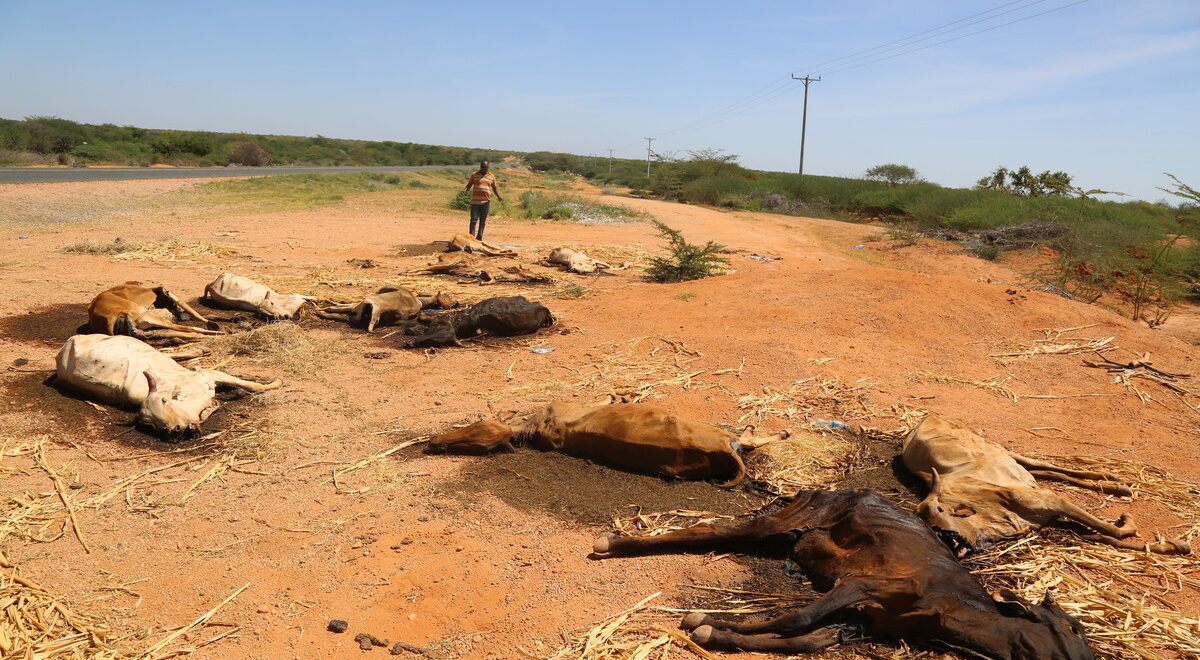Food prices have hit the highest point in a decade, and this may lead the world on the brink of a food crisis we are not prepared for or equipped to address.
There are multiple drivers of the current food price spike, not least the Russian invasion of Ukraine putting planting season at risk, as well as higher energy costs and food export restrictions resulting from sanctions against Russia.
The war is constraining an agricultural sector already under significant stress from supply chain disruptions caused by climate change and the Covid-19 pandemic.
The latest IPCC report is very clear that climate change will drive more hunger in the world due to crop failures, livestock deaths, impoverished soil, and increase in pests and diseases. Nearly a third of the world’s arable land will become unsuitable for food production by the end of the century if temperatures continue to rise.
Meanwhile, the impacts of Covid-19 on food availability and markets are still unfolding. Lower incomes and higher prices are putting food out of reach of many, making healthy diets unaffordable, and increasing hunger and malnutrition across the world. The war is just the last piece in this dramatic scenario.
As in every crisis, vulnerable and marginalized people are those who suffer the most, particularly in countries that rely on external food and inputs, including fertilizers and energy.
Some analysts point to the need to produce more to compensate for future food shortages by investing in sophisticated technologies. Advances in artificial intelligence, robotics and more could enable the world to produce more with less. But is this the real solution?
No. These kinds of solutions are based on a false premise: a “productivist” mindset that hunger is a result of insufficient food production, rather than – as we know to the case – an unjust food system that fails to ensure regular access to adequate, safe and healthy food, especially for those who need it most. Productivist solutions will simply replicate the existing model where those with more power and means control the food supply at the expense of those prone to climate disasters and external shocks.
We must look at systemic alternatives that increase the food self-sufficiency of people, especially the more vulnerable, their resilience to external shocks, and their ability to cope with the extreme volatility of climate change.
The Case for Agroecology
One way to do that is by fostering agroecological farming. Agroecological approaches unleash the potential of context-specific solutions and reduce dependence on chemical inputs, making the food system less vulnerable to external shocks while reducing greenhouse gas emissions. They rely on locally available resources, including naturally produced fertilizers like compost, and biological control of pests.
Some argue that agroecology can’t guarantee food production at scale, and some countries with adverse geographic conditions won’t be able to grow the food they need within their own borders. However, as agroecology supports local markets and shorter value chains for these countries, the opportunity to access local and regional markets would be safer than relying on the global supply chains that dominate the existing system of international trade.
Agroecology allows for diversified agri-food systems instead of only a few crops being grown and traded by a few big exporters. This diversification (of both products and producers) insulates domestic markets from global food price spikes.
Looking at the livestock sector, for example, those in need of massive amounts of imported animal feed for intensive livestock systems are more vulnerable than small-scale breeders adopting agroecological practices where pasture is incentivized, and animal waste is brought back to soil. The same is true for farming where nature-based practices break the cycle of dependence from costly external inputs, and solar or other renewable energy replaces gas and oil.
On the other side of the equation, consumers benefit by having access to more diversified and healthy diets at affordable prices.
The Right to Food
Is this a dream? The future we want is one in which food is treated as a right and not a commodity, the rampant greed of private interest is finally neutralized, and we organize society along the values of solidarity, care, rights, and well-being for all.
This is indeed a dream future, but there are concrete steps we can take to achieve it. We can blunt and denounce the power of industrial agribusiness whose interests lie in profits rather than eradicating hunger or resolving the climate crisis. We can educate policymakers and voters about the power of agroecology – that there is a viable alternative to the industrial food system. We can fight grabbing of arable land for financial speculation, or production of non-food cash crops like bioenergy. We can finance smallholder farmers through existing mechanisms like the Global Agriculture and Food Security Programme (GAFSP), which was established in 2010 for the exact purpose of responding to a food price crisis like the one looming in front of us now.
Systemic change is never easy, and to achieve it we must have a clear-eyed vision of the world we need, and the first steps we must take to get there. In the case of avoiding food price spikes and rising global hunger, we know the problem, we know the solution, and we have that vision. It’s time to get to work.

